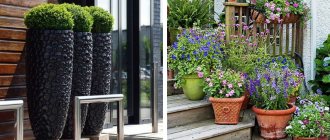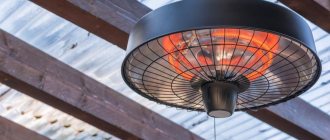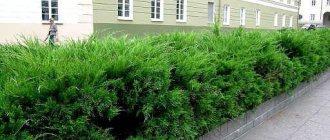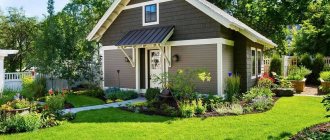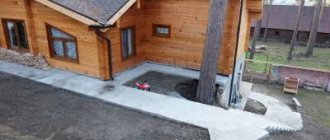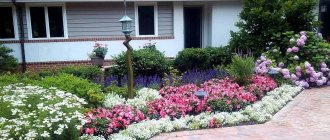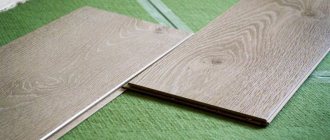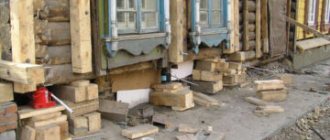Fruit bushes and trees look beautiful on the site during the spring flowering period. And if you plant conifers in the yard, they will look aesthetically pleasing both in summer and winter. That is why these plants are in great demand among gardeners when improving their garden plots.
In this article we will look at the main advantages and disadvantages of planting conifers on the site, which varieties are best to plant, how to do it correctly and much other useful information.
When to plant pine trees on the site?
Pine
can be
planted
in spring and autumn. In spring it is the end of April - the beginning of May, and in the fall - the end of August - the beginning of September. When planting in autumn, it is very important that the tree has time to take root before the onset of frost, then the seedling will be able to survive the winter without complications.
Interesting materials:
What causes whooping cough? What causes obstructive bronchitis? What causes pleurisy? Should I get an iPhone X or XR? What should a girl take with her to a ski resort? What to take with you for a planned caesarean section? What kind of test is spirometry? What are the bonuses at Citymobil? What kind of pepperoni sausage? What kind of box is a tiptronic?
Which type of wood to choose
For those who are interested in pine in the country, it is worth taking a responsible approach to choosing its variety. And they come in different shapes, colors, sizes.
Fastigiata
A beautiful tree with a narrow columnar crown. Reaches a height of 10 m, but grows very slowly. In 25 years it grows only 5.5 m. The annual growth is 20 cm in height and 5 cm in width.
This variety is often used in landscape design due to the beautiful bluish tint of the needles. The plant loves light. But it also grows in the shade (in this case its blue tint disappears). It is not demanding on soil, but it is recommended to plant it on loose, well-drained and moist soil.
Glauka
If you want to plant a pine tree near your house, you should pay attention to the Glauka variety. It is characterized by the blue-green color of the needles, a lush and luxurious crown, and a pleasant aroma. Over 30 years of growth on the site, it reaches only a height of 4-6 m. It grows very slowly, and the annual growth is only 8 cm. The plant is unpretentious in care.
Siberian cedar
The Siberian cedar pine in the garden will become a worthy decoration. It grows quite quickly at 40 cm per year. But for the first ten years after planting, the tree grows only to a height of 1.7 m. Its needles are dark green, dense and hard. The cones are large, ovoid, about 13 cm long and 8 cm wide. In addition to aesthetics, the tree purifies the air, strengthens creeping slopes, protecting them from landslides.
Attention: Siberian cedar begins to bear fruit only at the age of 20 years.
Compact Jam
The whitebark variety of this pine is considered a real find for most gardeners. After all, this slow-growing tree is distinguished by its small size and neat aesthetic appearance. It has long, dark green needles, densely covering the branches, and a beautiful symmetrical crown. This variety is often found on alpine hills, rocky gardens, and in various flower arrangements.
Blue Shag
It is distinguished by its compact crown, blue tint, and undemanding conditions for growing. Its height in the wild reaches 30 m. The crown of seedlings is pyramidal, becoming horizontal with age. Cones appear on the tree when it reaches 25 years of age. They are cylindrical, narrow and slightly curved.
Pyramidalis
Quite a tall tree with a narrow pyramid-shaped crown. Its height can reach 8 m, diameter - up to 3 m. Annual growth is 40 cm. In mature trees, the crown becomes wide and ovoid. The needles are dark green, 9 cm long. The variety is completely undemanding to the soil, prefers sunny meadows, and is resistant to negative factors.
Compacta
This is an ordinary pine, which looks prestigious and respectable on the site. It is a wide shrub, reaching a height of up to 2.5 m. Conifer grows slowly. The maximum annual growth is 15 cm. The plant loves the sun, is undemanding to soil fertility, but is sensitive to polluted air.
Rhododendron
This plant has a shallow root system, so it is not recommended to dig up the soil near it. Water rhododendrons with soft water, you can use settled or rainwater. Sometimes the water is acidified by mixing it with high-moor peat the day before watering.
Rhododendrons bloom in bright inflorescences, which serve well as garden decorations. They look solemn and can create a wonderful mixborder together with conifers and other perennials.
Compatibility of garden trees with each other and other crops
Here is information about the compatibility of trees and shrubs in the garden using the example of the most common crops in the area. The most popular fruit plants are apple trees, cherries, pears, and plums; in the southern regions, apricots and peaches are also popular. Among the berry bushes, the leaders are raspberries, currants of various types, gooseberries, and grapes.
Apple tree
In joint plantings, the apple tree, while it is young, gets along well with raspberries. Moreover, these are companion cultures that have a beneficial effect on each other. Raspberry roots loosen the ground, saturate it with oxygen and enrich it with nitrogen; foliage, when placed close together, can protect the tree from scab, and the apple tree protects the raspberry from gray rot. But when the crown of the apple tree grows, light-loving raspberries become uncomfortable under it, and the berry bushes have to be replanted.
A good neighbor for this plant is the ash maple: the phytoncides it secretes protect the apple tree from the codling moth. The maple crown should be trimmed annually, leaving a maximum of 1 m in height.
Crops next to which it is not recommended to plant an apple tree:
On a note. The worst antagonist of the apple tree, which can only be planted on the opposite side of the plot, is the walnut. The juglone contained in its leaves is a natural herbicide and, accumulating in the soil, destroys any vegetation. But even ordinary potatoes planted between rows can reduce the yield and worsen the taste of apples.
Pear
You should not plant a pear side by side with the same plants as an apple tree. The exception is poplar, especially black poplar; it is a pleasant companion for pears. Its most unfavorable neighbor is the common juniper, since rust can develop on it and spread to other plants. Of the berry bushes, the least favorite neighbor is the golden currant. Most pear varieties are self-fertile and require the company of other cultivars of the same species.
Cherry
Cherries get along well with cherries, grapes and plums. It is undesirable for it to be in proximity to pears, some varieties of apple trees, and all types of currants. You should not, saving sown area, plant strawberries, peppers, and tomatoes under the cherries. It is necessary to place all nightshades, which can infect trees with wilt (Verticillium wilt), away from cherries. As a result of this disease, the core of the shoots dies, and after flowering they dry out.
Plum
Plum is comfortable next to gooseberries, elderberries, and maples. The maple tree in the neighborhood, if given regular pruning, stimulates the fruiting of the plum tree, and the black elderberry saves from aphid invasion. Plum does not conflict with apple trees, raspberries, and black currants. Birch and fruit trees (except apple trees) are unsuitable neighbors for this crop.
Competition for survival - how to avoid it
Cultures of even the same species can be at odds, fighting for space, lighting, nutrition, and even moisture if the plantings are dense. In this case, the weakest specimens are oppressed and die. To prevent this from happening, it is necessary to satisfy the requirements of each crop for agricultural technology and planting scheme in mono-plantings.
While the seedlings are small, sometimes it seems that the distances between plants during planting, indicated in the characteristics, are excessive. However, these intervals should be maintained taking into account the size of the crowns of mature trees. For each culture they are individual, but on average they are:
If there is a forest near the garden plot where trees such as ash, oak, and birch grow, you need to make sure that the fruit trees are located seven, or better, ten meters away from them. Closer wild plants with overgrown roots will begin to intercept moisture and nutrition from delicate cultivars.
Spatial isolation is also necessary for some garden shrubs: lilac, jasmine, barberry, rose hips, viburnum, sea buckthorn. Growing aggressively, they suppress the development of other cultures, displacing them from “their” territory.
Khosta
This perennial is easy to grow in any corner of the garden. Hosta can grow in one place for about 30 years without degenerating. If you plant the plants in the sun, they will quickly adapt to the conditions, but even with a little shading, the host will develop well.
You can place the hosta next to conifers and other herbs. The culture is non-aggressive, and the decorative leaves will fit into any landscape group.
What to plant next to coniferous plants?
Nowadays there is practically nowhere without conifers. Thanks to their diversity and unpretentiousness, they have firmly taken a place in our hearts and gardens. They are used everywhere in large and small groups and flower beds. With their help, the volume, height and depth of mixborders (its structure) are set. But, despite all their splendor, you will want to get rid of the monotony and add bright colors to your flower garden. What kind of perennial garden plants can be planted next to your favorite conifers? After all, being in such a neighborhood, they will have to endure varying degrees of shading, acidic soil, and insufficient or, conversely, excess moisture. Choose the same perennials for your neighborhood with architectural conifers - the neighborhood must be worthy. Plants should emphasize and support each other. Inexpressive plants that quickly fade and lose their appearance will look simply untidy against the background of conifers.
In the background, you can use types of perennials that will not get lost and will easily cover the empty spaces between the main plants with their monumental appearance and height. Such perennials form dense clumps and are decorative in themselves, even when they do not bloom. They are clearly visible from all sides and even from above. These can be plants such as aconite (blooming from May to September depending on the variety, 50-160 cm in height, poisonous), loosestrife (June-August, 80-140 cm), delphinium (June-September, up to 180 cm), buzulnik (July-September, 150-200 cm), Volzhanka dioecious (June, up to 200 cm), Kamchatka Volzhanka (July-August, up to 120 cm) and various ornamental grasses.
Common heather
The leaves of the plant can be yellow, bronze, green, silver and orange. When flowering, heather makes an indelible impression: the branches are covered with many inflorescences, which consist of glass-shaped flowers - pink, purple, white, cherry. After drying, they stay on the bush for a long time.
Heather loves slightly acidic soil. It benefits from mulching with pine needles and pieces of bark, which makes the proximity to pine trees justified..
Wintergreen recumbent
It is very decorative, and in the garden it will be comfortable next to evergreen coniferous crops. Wintergreen, with thick leathery leaves and red berries, thrives in temperate latitudes.
The plant is suitable for moist peat soils rich in humus. Acidity is preferable within the pH range of 5.0-6.0. Wintergreen loves lacy partial shade and a place protected from the winds.
How to properly plant spruce in open ground: expert advice
When everything is ready, you need to carefully remove the seedling from the container. In this case, you need to destroy the container, the main thing is that the lump of earth remains intact. Sometimes it is possible to remove a seedling by placing the container on its side and knocking on the bottom and sides. When you have removed the seedling, without wasting time, install it in the hole.
| Important! It is necessary to place the seedling strictly vertically and position it as it previously grew in the container. It should not be higher or lower than it grew before. Make sure of this before backfilling begins. |
Once installed, fill the existing voids in the hole with fresh soil or the mixture that was placed at the bottom of the hole. Finally, thoroughly but gently compact the soil to avoid creating voids between the roots and the soil.
Botanical description and features
This coniferous tree has many varieties, ranging from Scots pine, which is familiar to residents of Russia, reaching a height of 40–50 m, to creeping varieties used to create landscape compositions. All these plants share common botanical properties - the presence of paired needles of a bluish or dense green hue and ovoid fruit-cones with seeds developing in them.
1 - general view of the tree, 2 - shortened shoot with two needles, 3 - branch with female and male strobili, 4 - female cone, consisting of macrostrobilae, at the time of flowering, 5 - macrostrobilus (a - seed scale with two ovules, b - covering and seed scales), 6 - branch with an overwintering cone (a) and a formed cone (b), 7 - opened mature cone, 8 - male spikelet consisting of macrostrobilae, 9,10 - microsporophyll, 11 - pollen, 12 - lignified seed and covering scales with a thickened apex - a scutellum (apophysis), 13 - lignified seed scales with 2 winged seeds, 14 - a seed with a wing.
The shape of the tree's crown depends on its variety, as well as its location. Thus, in dense coniferous forests, pine, as a rule , has a cone-shaped crown, while in spacious areas it looks more like a spreading umbrella. Pine needles, cones and wood contain essential oil, which is widely used in medicine.
- Medicines made from this substance are used for the following health problems:
- diseases of the respiratory system;
- diseases of the gastrointestinal tract;
- inflammation of the oral cavity;
- dermatological diseases;
- joint diseases.
The use of pine trees in the garden landscape
Studying the pros and cons of planting pine in the garden, it is worth noting that a dwarf tree is still worth planting, as it looks unusually beautiful, enriches the air, and fertilizes the soil. Conifers look luxurious in different types of planting: solo, group, on lawns, in flower arrangements. Dwarf varieties are actively used in the arrangement of rockeries and rock gardens. They are also often found when arranging front areas.
In conclusion, it is worth noting that by planting a beautiful and low conifer on the site, you will make it more noble, aristocratic and aesthetic. These plants will not take up much of your time, as they require virtually no care. But they will delight the owners with a beautiful and evergreen appearance at any time of the year.
How to choose a spruce seedling and not go wrong
We recommend purchasing seedlings only from nurseries in your region. They are sold both with a closed root system (that is, in pots or strong film), and with an open one - when the roots are not protected by anything, they are simply moistened or sprinkled with wet sawdust.
If we are talking about an apple or pear tree, then it is even better if the seedling has an open root system: it will be cheaper, and it is easier to choose a high-quality specimen. But if we are talking about spruce, then you need to choose a seedling exclusively with a closed root system, and nothing else.
| Important! The root system of all coniferous plants without exception is very sensitive to drying out and can easily die. Therefore, you need to purchase seedlings exclusively in pots. |
Carefully inspect the seedling when purchasing. It should look alive and healthy, with evenly developed above-ground mass, not one-sided. The seedling should not show any signs of damage or fungal infection. All needles should be of a typical color, not gray or yellow. If you notice that some of the shoots are withered, broken, or there are pockets of dried needles, then such a seedling is not worth buying, even at a big discount.
Photo by ru.depositphotos: The seedling must be absolutely healthy in appearance.
Caring for a young spruce after planting in 5 steps
Provide proper care for your spruce:
- Watering . After planting, water the seedling with a bucket of water at room temperature. Mulch the surface of the soil with compost or humus with a layer of a couple of centimeters. This way you will save moisture, insulate the roots when planting in the fall and protect them from overheating when planting in the spring. Water regularly and abundantly, preventing the soil from drying out. It should always be a little damp. Water in the morning and evening, but not in the heat.
- Feeding . They're not particularly important. Once a year, preferably in the spring, you need to add a matchbox of nitroammophoska to the tree trunk. At this point, feeding can be completed.
- Sun protection. When planting in spring, try to shade the tree from bright sunlight for a month.
- Loosening . Periodically, carefully loosen the soil in the tree trunk area to a depth of no more than five centimeters.
- Shelter . In the first couple of years, it is advisable to lay spruce branches around the trunk for the winter. It will collect snow and additionally protect the roots from freezing.
Now you know everything about planting spruce and caring for it in the open ground.
______________________________________________________________________________________________
Other vegetation
Herbs, mushrooms, berries, succulents, ferns, virgin grapes, mosses and lichens grow well under the pine tree. The species composition depends on the variety of coniferous perennial and the growing region. It is recommended to bring herbaceous plants from the pine forest. Among the mushrooms, white mushrooms, saffron milk caps, boletus, chanterelles, russula, and trumpet mushrooms get along well. Poisonous ones may appear - red and panther fly agarics, toadstool, false honey fungus. Moss grows in damp places and is able to absorb moisture from the outside.
The beds with strawberries under the pine tree will not leave anyone indifferent. Plants get along well together. From the ferns you can plant ostrich, shield grass, kochedednik, Linnaeus holocum, and bracken. Hosta is a herbaceous perennial that needs additional watering at first. Sedums can be arranged from succulents.
On a note! It is prohibited to plant birch and bird cherry next to pine trees, as they suppress coniferous species.
Herbs, mushrooms, berries, succulents, ferns, virgin grapes, mosses and lichens grow well under the pine tree.
The crop requires careful care for the first 2-3 years and does not always respond well to the appearance of nearby competitors vying for nutrients. However, neighbors for pine are found among all classes of vegetation. The tree enters into a symbiotic relationship with many.
Herbaceous carnation
The plant prefers light sandstones and loams. Herbaceous carnation often grows under pine trees in natural conditions. Slightly acidic soil suits it. The perennial easily tolerates drought and frost, although it may not bloom in the hot season. Cloves are sensitive to waterlogging.
In a garden plot, herbaceous crops can be planted surrounded by stones. Carnation blooms from the beginning of June for about a month and a half.
Reasons for incompatibility of garden crops
When developing the land, amateur gardeners often do not bother themselves with drawing up a competent planting plan. In the best case, they select a site with suitable soil and lighting for a certain crop, not taking into account that neighboring plants may be indifferent to each other or even quarrel.
The main factors leading to incompatibility of plants with each other:
Before planting a garden, you should make a list of plants that are planned to be planted on the site. When developing a planting scheme, it is imperative to check which fruit trees can be planted next to each other and with other crops. Optimal compatibility is achieved if crops of the same type are planted nearby, forming, for example, a cherry orchard, apple orchard, pear orchard, etc. But not many can afford this, having a standard plot of land. Therefore, trees with similar growing conditions and the absence of antagonism are planted in one group.
Florist's world
If your site is located in a pine forest, where pines dominate everywhere, then you should choose flowers that can be planted under the pines, because you must admit, the forest is natural, natural and the air is clean, but still, little is missing, and this beauty and pleasure. A corner where we could sit, think or relax on warm summer evenings, and for this we need flowers under a pine tree , and not in separate clumps, but in properly decorated flower beds.
Pines are grown both in small areas and in large ones, as they say - God Himself ordered, because it is not only a beautiful and powerful tree, pine has a disinfecting effect and at the same time fills the air with phytoncides, the bronze bark and bright green needles attract the eye.
So, about the flowers under the pine tree, what to choose and what to plant, but first let’s understand that there is not much shade from pine trees, while in the circle around the trunk there is always coniferous litter, which acidifies the soil, and, consequently, flowers that love partial shade and acidic soil, they will be able to survive near pine trees.
In pine forests, lumbago or sleep grass grows well, they are beautiful in large clumps in early spring, and in the summer there remains carved foliage with a slight pubescence, which is also quite attractive.
The usual round-leaved bell and some types of alpine bell will do. All these flowers do not tolerate transplantation well, but they reproduce themselves magnificently, by self-sowing.
Thyme with kupena, phlox and sedum with sedum will feel great. Succulents and other American bulbs have a place for everything.
Especially during flowering, princelings, petiolate hydrangea or garden hydrangea, girlish grapes will look beautiful, which in the fall will change their color to purple-red, which looks amazing against the background of the trunk!
For heather plants, m and erica will be an ideal place under a large pine tree; it will also be successful for rhododendrons; needles generally have a positive effect on the growth and flowering of these plants. Azaleas and gorse also feel great under pine trees, and another plus is that you don’t have to mulch the planted plants, everything is already ready - right down to the planting soil, because these plants just need soil with an acidic reaction.
Cowberry
These cheerful bushes adore natural coniferous dry forests. They can also be found in peat bogs. Lingonberry reaches a height of 30 cm, it has thick leathery leaves, white flowers with a faint odor. Berries are up to 8 mm in diameter, with a shiny surface.
It is not difficult to grow lingonberries in the garden; you just need to choose a suitable place for it, remove some of the soil and add peat to the ground. This plant reproduces by seeds.
